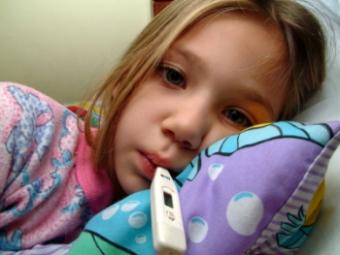
With a potential pandemic on the rise, it's pertinent every parent or caregiver recognize swine flu symptoms in kids.
About Swine Flu
Swine flu, recently renamed the H1N1 virus, is an influenza strain that has quickly transmitted itself to humans within several countries of the world. Swine flu cases have been reported in the United States, Mexico, New Zealand, Spain and Canada. Although the swine flu is a respiratory virus that is contagious between pigs year-round, the H1N1 virus is a combination of swine, bird and human flu strains with no distinct relation or links to pigs or the consumption of pork.
Currently, there is no guarantee whether or not the H1N1 strain will become a worldwide pandemic. Earlier deadly flu strains such as the Spanish flu in 1918 may have been contained with the modern technology and medicine available today. Although the government has ordered a vaccine in the making and has several treatments available for treating the virus, influenza strains are unpredictable and change rapidly, mutating into strains that may or may not respond effectively to medication.
Know the Signs: Swine Flu Symptoms in Kids
Any illness or virus can become serious or life threatening if it affects a weakened immune system. Without further knowledge on how the H1N1 virus may or may not mutate, caregivers and parents must be aware of the early swine flu symptoms in kids and be prepared to seek immediate medical attention.
Although it seems rightful to panic, since the United States has declared a "flu emergency," there is currently no evidence that the swine flu, or H1N1 virus, will become any more serious than the common flu. Prevention, preparation and prompt medical treatment is the best plan of action to decrease the spread and seriousness of any flu case. As with all flu strains, the seriousness of the virus increases when children are young and have weakened immune symptoms or respiratory conditions such as asthma.
If your child exhibits any of the following flu-like symptoms, contact his or her doctor without delay:
- Fever
- Sore throat
- Chills
- Headache
- Body aches
- Cough
The following symptoms are sure signs of a more serious case of the flu and require immediate emergency care:
- Fast or troubled breathing
- Bluish skin coloring
- Rash and fever
- Symptoms that improve, and then worsen with a cough and a fever
- Refusal of fluids
- Lethargic and tired
Practice Prevention
To minimize the spread of the swine flu, health officials and government officials recommend the following course of action:
- Hand washing: Kids should always be taught the importance of hand washing in order to stay healthy and prevent the spread of germs.
- Avoid contact: Flu germs are spread through contact and airborne viruses. Keep your distance from anyone who is coughing, sneezing, or who generally appears unwell. As with all viruses, you can catch the germs and pass them on before symptoms even appear.
- Avoid trips: The government has recommended against unnecessary travel to Mexico.
- The U.S. government has ordered many school closures in areas where cases have been reported. To further reduce your child's risk, keep him or her away from public areas and exercise caution when needed.
Although the probability of a pandemic is certainly very real, understanding the swine flu and the symptoms will better prepare both you and your family should a strain hit close to home. For more information about swine flu, visit the Center for Disease Control's website.







